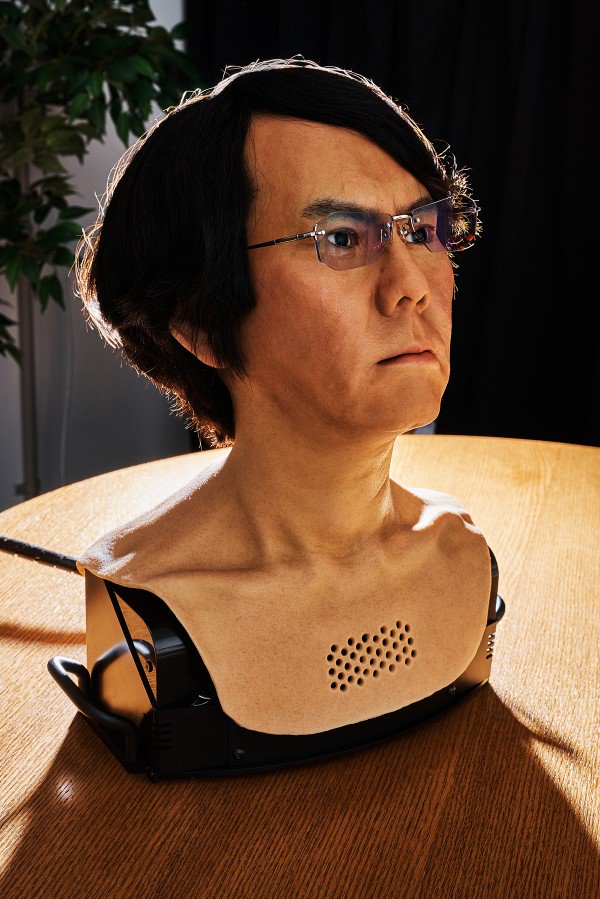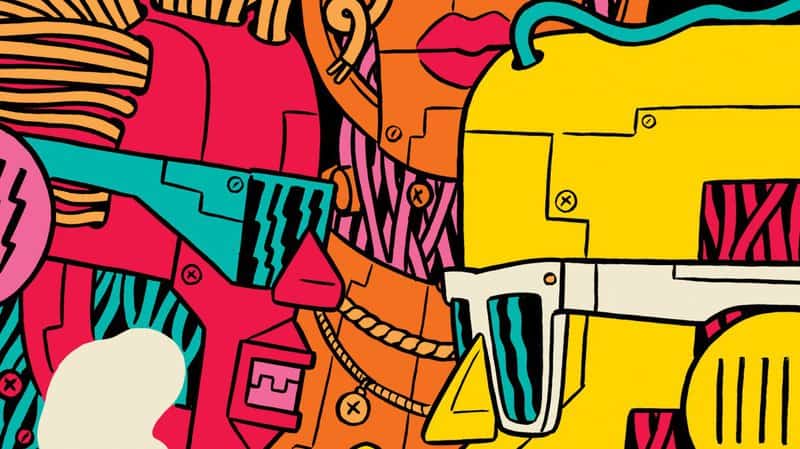A robot revolution has begun. Intelligent machines now routinely patrol malls, hospitals, and highways, and the machines are becoming increasingly proficient at everything from picking fruit to performing surgery. Automation is set to transform our lives.
Backflipping bots
BostonDynamics
A robot unveiled recently is capable of a few jaw-dropping parkour moves, including this effortless-looking backflip. The acrobatic bot was developed by Boston Dynamics, and its agility suggests the company is making rapid progress toward training humanoid machines to navigate complex and challenging environments.
For anyone who watched the DARPA Robotics Challenge in 2015, where an earlier version of the same bot struggled with simple tasks like opening doors and stepping out of a car, the backflip certainly seems like a remarkable advance. It isn’t clear whether the robot can pull off the stunt consistently or adapt to different setups, however.
Boston Dynamics was among several high-profile robotics companies snapped up by Google in whirlwind spending spree in 2014. The company was founded by Marc Raibert, a roboticist who pioneered the development of dynamic balancing algorithms for legged robots and who was previously a professor at MIT. The robots’ remarkable movements sometimes make the machines seem uncannily alive.
Legged robots remain very expensive and difficult to commercialize. So it came as little surprise when Google sold Boston Dynamics to Japan’s Softbank earlier in the year. Still, the company is making advances, such as a four-legged bot called Spot that it also showed off last month. This one shows that the company is making strides in miniaturization and control.
A nimble-fingered picker
USTRALIAN CENTRE FOR ROBOTIC VISION
In another impressive development, Ken Goldberg and colleagues at UC Berkeley demonstrated a robot arm capable of picking up a wide variety of objects. What’s remarkable about the Berkeley bot is that it learned to do this not through careful programming or relentless practice but by studying a large database of virtual objects and grasps. It then used this knowledge to pick up even unfamiliar and awkwardly shaped new things.
Grasping remains one of the biggest challenges in robotics, and the work shows how sophisticated approaches to learning, as well as the capacity for robots to share information via the cloud, could significantly improve manipulation skills for robot arms in factories and warehouses. This, in turn, could lead the technology to be deployed far more widely.
Right Hand Robotics, a startup in Cambridge, Massachusetts, is among those pushing the use of picking robots into new areas of work. The startup emerged from stealth mode this year with a novel robot gripper and a cloud platform that lets its robots share information and learn rapidly.
Warehouses seems particularly ripe for robotic disruption, with plentymorecompaniesdeveloping machines to automate the routine elements of this kind of work. Amazon is investing in development of state-of-the-art warehouse bots with a contest that challenges machines to perform the kind of picking work done by thousands of humans at the company’s vast fulfillment centers. This year’s winner, from the Australian Center for Robotic Vision, required just a few images to learn how to pick up a new object. It might not be too long before Amazon’s warehouses, which already use robots to move shelves around, resemble vast money-making robots themselves.
Truly autonomous driving
Waymo
Waymo, a division of Google’s parent company, Alphabet, created to commercialize self-driving cars, announced that it would test its automated vehicles without a safety driver behind the wheel. This is a significant landmark, as it suggests that engineers feel the system has reached a certain level of reliability.
The technology is progressing steadily, in part thanks to novel sensors and clever AI approaches. Among automotive companies, Tesla shows no signs of slowing down with its semi-automated system, and Uber is among several companies rushing to put self-driving trucks on the roads. In October, Yamaha even showed off an awesome-looking self-balancing robotic motorcycle, capable of zooming around a racetrack at 124 miles per hour. Pizza delivery may never be the same again.
Yamaha
Self-driving cars are not yet ready to take over the roads. Serious questions still hang over the technology, including whether the instruments are reliable enough and how readily hackers could take over the vehicles.
Robots among us
The robot revolution now extends well beyond highways and warehouses. Robots are being tested in stores, hotels, restaurants, and other settings. Several startups are also testing delivery bots in and around San Francisco.
Interestingly, however, that tech-savvy city also appears to be the epicenter of a robot backlash. Its Board of Supervisors recently questioned whether the city needs so many pavement-roaming machines, seeking to impost a strict limit. The board has also proposed a tax on robots, which might help fund some sort of basic income for those displaced by technology.
Advanced robots are only the most visible example of technology-driven job displacement. Plenty of jobs are being eliminated by simpler forms of automation and, increasingly, by software. Since we don’t know how many viable new jobs the current wave of automation will create, it promises to have a profound impact on the economy and society itself.
The way automation, artificial intelligence, and robots are reshaping the future of work is an important topic for anyone interested or concerned about the impact of technology on our lives. It’s a topic that MIT Technology Reviewhas coveredin depth in the past. We recently looked at the international picture, with pieces on how software automation is changing the outsourcing business in India, and how China is taking the lead in developing AI.
Even though robots are still relatively stupid, their expanding abilities also raise questions about how our relationship with these machines may evolve. And in an issue dedicated to AI, the novelist Louisa Hall considered how we may feel about machines capable of sensing and responding to our emotions in uncanny ways. A fascinating feature in Wired also explored this topic by profiling one of the most curious characters in the field, a prolific and strange Japanese professor named Hiroshi Ishiguro.

Before you get too carried away, it’s well worth reading a piece by one of the fathers of modern robotics, on how to think about the progress and hype surrounding artificial intelligence. It’s also a useful guide for anyone who wants to make sense of the forthcoming robot uprising.

